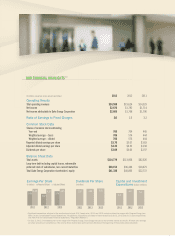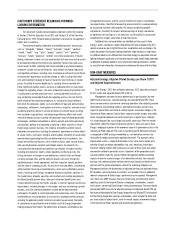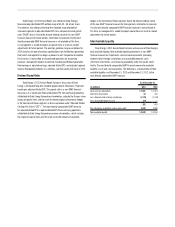Duke Energy 2013 Annual Report Download - page 8
Download and view the complete annual report
Please find page 8 of the 2013 Duke Energy annual report below. You can navigate through the pages in the report by either clicking on the pages listed below, or by using the keyword search tool below to find specific information within the annual report.-
 1
1 -
 2
2 -
 3
3 -
 4
4 -
 5
5 -
 6
6 -
 7
7 -
 8
8 -
 9
9 -
 10
10 -
 11
11 -
 12
12 -
 13
13 -
 14
14 -
 15
15 -
 16
16 -
 17
17 -
 18
18 -
 19
19 -
 20
20 -
 21
21 -
 22
22 -
 23
23 -
 24
24 -
 25
25 -
 26
26 -
 27
27 -
 28
28 -
 29
29 -
 30
30 -
 31
31 -
 32
32 -
 33
33 -
 34
34 -
 35
35 -
 36
36 -
 37
37 -
 38
38 -
 39
39 -
 40
40 -
 41
41 -
 42
42 -
 43
43 -
 44
44 -
 45
45 -
 46
46 -
 47
47 -
 48
48 -
 49
49 -
 50
50 -
 51
51 -
 52
52 -
 53
53 -
 54
54 -
 55
55 -
 56
56 -
 57
57 -
 58
58 -
 59
59 -
 60
60 -
 61
61 -
 62
62 -
 63
63 -
 64
64 -
 65
65 -
 66
66 -
 67
67 -
 68
68 -
 69
69 -
 70
70 -
 71
71 -
 72
72 -
 73
73 -
 74
74 -
 75
75 -
 76
76 -
 77
77 -
 78
78 -
 79
79 -
 80
80 -
 81
81 -
 82
82 -
 83
83 -
 84
84 -
 85
85 -
 86
86 -
 87
87 -
 88
88 -
 89
89 -
 90
90 -
 91
91 -
 92
92 -
 93
93 -
 94
94 -
 95
95 -
 96
96 -
 97
97 -
 98
98 -
 99
99 -
 100
100 -
 101
101 -
 102
102 -
 103
103 -
 104
104 -
 105
105 -
 106
106 -
 107
107 -
 108
108 -
 109
109 -
 110
110 -
 111
111 -
 112
112 -
 113
113 -
 114
114 -
 115
115 -
 116
116 -
 117
117 -
 118
118 -
 119
119 -
 120
120 -
 121
121 -
 122
122 -
 123
123 -
 124
124 -
 125
125 -
 126
126 -
 127
127 -
 128
128 -
 129
129 -
 130
130 -
 131
131 -
 132
132 -
 133
133 -
 134
134 -
 135
135 -
 136
136 -
 137
137 -
 138
138 -
 139
139 -
 140
140 -
 141
141 -
 142
142 -
 143
143 -
 144
144 -
 145
145 -
 146
146 -
 147
147 -
 148
148 -
 149
149 -
 150
150 -
 151
151 -
 152
152 -
 153
153 -
 154
154 -
 155
155 -
 156
156 -
 157
157 -
 158
158 -
 159
159 -
 160
160 -
 161
161 -
 162
162 -
 163
163 -
 164
164 -
 165
165 -
 166
166 -
 167
167 -
 168
168 -
 169
169 -
 170
170 -
 171
171 -
 172
172 -
 173
173 -
 174
174 -
 175
175 -
 176
176 -
 177
177 -
 178
178 -
 179
179 -
 180
180 -
 181
181 -
 182
182 -
 183
183 -
 184
184 -
 185
185 -
 186
186 -
 187
187 -
 188
188 -
 189
189 -
 190
190 -
 191
191 -
 192
192 -
 193
193 -
 194
194 -
 195
195 -
 196
196 -
 197
197 -
 198
198 -
 199
199 -
 200
200 -
 201
201 -
 202
202 -
 203
203 -
 204
204 -
 205
205 -
 206
206 -
 207
207 -
 208
208 -
 209
209 -
 210
210 -
 211
211 -
 212
212 -
 213
213 -
 214
214 -
 215
215 -
 216
216 -
 217
217 -
 218
218 -
 219
219 -
 220
220 -
 221
221 -
 222
222 -
 223
223 -
 224
224 -
 225
225 -
 226
226 -
 227
227 -
 228
228 -
 229
229 -
 230
230 -
 231
231 -
 232
232 -
 233
233 -
 234
234 -
 235
235 -
 236
236 -
 237
237 -
 238
238 -
 239
239 -
 240
240 -
 241
241 -
 242
242 -
 243
243 -
 244
244 -
 245
245 -
 246
246 -
 247
247 -
 248
248 -
 249
249 -
 250
250 -
 251
251 -
 252
252 -
 253
253 -
 254
254 -
 255
255 -
 256
256 -
 257
257 -
 258
258 -
 259
259
 |
 |

6
l
DUKE ENERGY
Our nuclear fleet of 11 units achieved a
combined capacity factor of 92.8 percent
in 2013, our 15th consecutive year above
90 percent. During the critical months of
June through August, when low-cost power
was needed most to meet summer load,
the fleet capacity factor was 99.7 percent.
Two nuclear units set continuous-operation
records exceeding 500 days.
Our fossil fleet of mostly coal and
combined-cycle natural gas plants also
performed well, achieving a forced outage
rate of 3.5 percent in 2013, building on
our improving trend since 2010. Thanks to
fleet modernization and joint dispatch, Duke
Energy is taking advantage of the lower
natural gas prices driven by the U.S. shale
gas revolution. Our integrated power system
in the Carolinas provides greater flexibility
to adapt to the new dynamics of coal and
natural gas prices.
Our power delivery team is achieving
high reliability levels, even in the face of
extreme weather events in 2013 and early
this year. In June 2013, high-speed winds
moved across the Carolinas, downing trees
and power lines, and causing outages for
about 700,000 customers. With advance
planning and our scale that enables rapid
mobilization of line crews,
including our Midwest
and Florida teams, we
restored power to more
than 90 percent of these
customers within the first 36 hours. Similar
heroic responses occurred in November
when tornadoes and wind shears struck
Indiana and Ohio.
In January 2014, waves of severe arctic
cold led to record peak energy demands
on Duke Energy’s system everywhere but
Florida. Team planning and the resilience
of our integrated generation and delivery
system paid off. With few exceptions, we
kept the power flowing to our customers
throughout this period.
Then in February, our utility crews from
throughout our regions worked together
to meet the challenge of the Carolinas’
worst winter storm in a decade. This
record-breaking storm affected more
than 900,000 customers.
REALIZING
MERGER
BENEFITS:
Achieving signicant benets for both our customers and investors was a
major driver of the 2012 merger between Duke Energy and Progress Energy.
We are on track to deliver $687 million in fuel and joint-dispatch savings
over ve years for our Carolinas customers.
We also expect to achieve about $550 million in nonfuel operating and
maintenance expense savings in 2014, which helps hold down future rate
increases for all our customers.
RAPID
mobilization
of line crews
